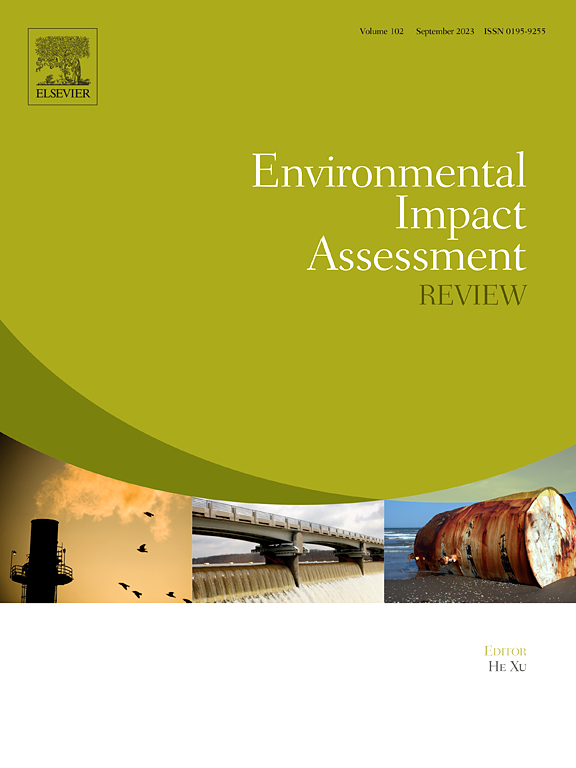Spatiotemporal patterns and drivers of public concern about air pollution in China: Leveraging online big data and interpretable machine learning
IF 9.8
1区 社会学
Q1 ENVIRONMENTAL STUDIES
引用次数: 0
Abstract
Public concern about air pollution directly shape residents' risk adaptation behaviors, government policies, and environmental sustainability. However, long-term nationwide studies in China are limited, with even fewer examining the nonlinear mechanisms driving these dynamics. Using Baidu search data from 290 cities across China (2011−2022), we analyzed the spatiotemporal patterns of public concern about air pollution and its mismatch with actual observed pollution levels. We further employed an XGBoost-SHAP model to reveal nonlinear effects of various factors on public concern. The results show a rise-and-fall trend in public concern from 2011 to 2022, with a clear correlation between declining concern and reduced PM2.5 levels after 2016. Concern was highest in coastal areas, the North China Plain, and northern coal-producing regions. In 2011, 980 million people had “high pollution-low concern,” dropping to around 200 million since 2016. Meanwhile, the population with “low pollution-high concern” steadily grew, highlighting China's progress in air pollution control and public environmental awareness. Actual air pollution levels are not the primary driver of public concern; education and income have the strongest influence. Public concern shows a roughly linear relationship with education, urban development, and media access. However, income and PM2.5 levels display nonlinear effects: concern plateaus above a per capita income of 28,000 yuan and declines after 60,000 yuan. Similarly, concern stabilizes once PM2.5 levels exceed 80 μg/m3. This study reveals the nonlinear effects and threshold dynamics driving public environmental concern, offering valuable insights to inform strategies for advancing public environmental awareness and strengthening environmental governance in China.

公众对中国空气污染关注的时空格局和驱动因素:利用在线大数据和可解释的机器学习
公众对空气污染的关注直接影响居民的风险适应行为、政府政策和环境可持续性。然而,中国的长期全国性研究有限,对驱动这些动态的非线性机制的研究更少。利用2011 - 2022年中国290个城市的百度搜索数据,分析了公众对空气污染关注的时空格局及其与实际观测污染水平的不匹配。我们进一步利用XGBoost-SHAP模型揭示了各种因素对公众关注的非线性影响。结果显示,从2011年到2022年,公众关注度呈上升和下降趋势,2016年之后,关注度下降与PM2.5水平下降之间存在明显的相关性。沿海地区、华北平原和北方产煤地区的担忧最为严重。2011年有9.8亿人“高污染低关注”,2016年降至2亿左右。与此同时,“低污染高关注”人群稳步增长,凸显了中国大气污染治理和公众环保意识的进步。实际的空气污染程度并不是公众关注的主要因素;受教育程度和收入的影响最大。公众关注与教育、城市发展和媒体获取大致呈线性关系。然而,收入和PM2.5水平表现出非线性效应:人均收入超过28000元时,关注趋于平稳,超过60000元后,关注下降。同样,一旦PM2.5浓度超过80 μg/m3,人们的担忧就会稳定下来。本研究揭示了驱动公众环境关注的非线性效应和阈值动态,为中国提高公众环境意识和加强环境治理的策略提供了有价值的见解。
本文章由计算机程序翻译,如有差异,请以英文原文为准。
求助全文
约1分钟内获得全文
求助全文
来源期刊

Environmental Impact Assessment Review
ENVIRONMENTAL STUDIES-
CiteScore
12.60
自引率
10.10%
发文量
200
审稿时长
33 days
期刊介绍:
Environmental Impact Assessment Review is an interdisciplinary journal that serves a global audience of practitioners, policymakers, and academics involved in assessing the environmental impact of policies, projects, processes, and products. The journal focuses on innovative theory and practice in environmental impact assessment (EIA). Papers are expected to present innovative ideas, be topical, and coherent. The journal emphasizes concepts, methods, techniques, approaches, and systems related to EIA theory and practice.
 求助内容:
求助内容: 应助结果提醒方式:
应助结果提醒方式:


